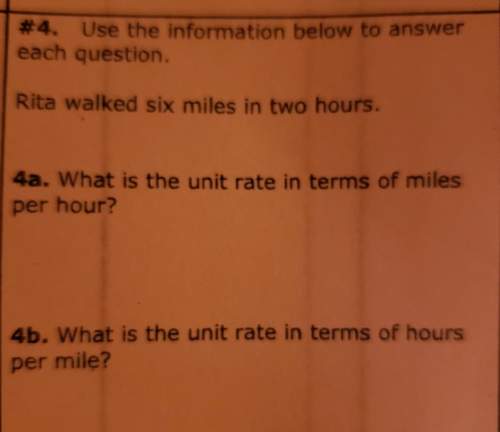
Mathematics, 09.04.2020 20:05 Ellafrederick
The average rate of change on [1, 3] is (the same as, greater than, or less than) the average rate of change on [2, 4]. The average rate of change on [1, 3] is (the same as, greater than, or less than) the average rate of change on [1, 5]. So, the function (cannot, appears to) be linear.

Answers: 1


Other questions on the subject: Mathematics

Mathematics, 21.06.2019 19:00, JvGaming2001
The probability that you roll a two on a six-sided die is 1 6 16 . if you roll the die 60 times, how many twos can you expect to roll
Answers: 1

Mathematics, 21.06.2019 21:00, vrentadrienneoqug1a
Ian is in training for a national hot dog eating contest on the 4th of july. on his first day of training, he eats 4 hot dogs. each day, he plans to eat 110% of the number of hot dogs he ate the previous day. write an explicit formula that could be used to find the number of hot dogs ian will eat on any particular day.
Answers: 3

Mathematics, 21.06.2019 22:30, lauren21bunch
Gabrielle's age is two times mikhail's age. the sum of their ages is 84. what is mikhail's age?
Answers: 2
You know the right answer?
The average rate of change on [1, 3] is (the same as, greater than, or less than) the average rate o...
Questions in other subjects:














